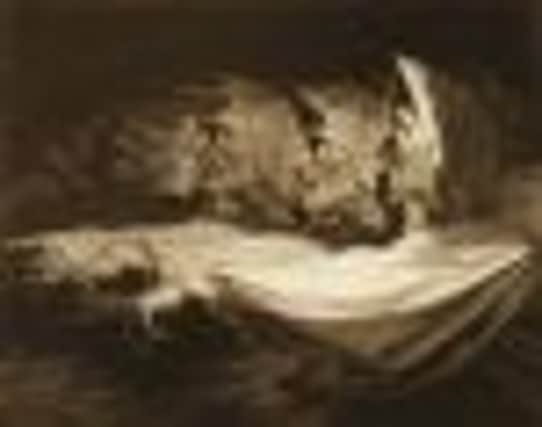History of witchcraft to go on display in major show


• Witches and Wicked Bodies exhibition opens at the Scottish National Gallery of Modern Art from 27 July
• Pieces will include John William Waterhouse, Francisco de Goya, John Runciman, William Blake and Salvador Rosa
Advertisement
Hide Ad• The exhibition will look at contemporary incarnations of witch craft in TV show Game of Thrones


The Scottish National Gallery of Modern Art will be bringing together work from collections around the UK for the first what is believed to be the first ever display dedicated to the subject matter.
Works dating back to the height of the witchcraft trials in the 16th and 17th centuries will take centre stage alongside famous pieces by the likes of John William Waterhouse, Francisco de Goya, John Runciman, William Blake and Salvador Rosa.
Everything from the origins of the iconic images of witches flying on broomsticks to their portrayal by Shakespeare will be examined, while witches’ sabbaths, “black masses” and other devilish rituals will also be explored.
Visitors to the exhibition, jointly organised by the National Galleries of Scotland and the British Museum, will be warned that some of the images on show will be “genuinely frightening and disturbing”. Publicity material for the exhibition - entitled Witches and Wicked Bodies - says it will show everything from hideous hags and “medusa-like” creatures to beautiful seductress.
However it will also feature work by several female contemporary artists, including Paula Rego and Kiki Smith, as well as exploring how images of witches were often deployed to portray women in male-dominated societies. The exhibition will also look at how witchcraft is being tackled at present in the likes of fantasy TV show Game of Thrones and Jeannette Winterson’s novel The Daylight Gate, inspired by the 17th century Pendle witchcraft trials in Lancashire.
Advertisement
Hide AdAmong the works going on display will be Rosa’s Witches at Their Incantations, which is coming on loan from the National Gallery in London and Blake’s The Whore of Babylon, which is currently at the British Museum.
Other works are brought together for the exhibition from these attractions, as well as the Victoria and Albert Museum, the Tate, the Ashmoleum Museum, in Oxford, and the National Galleries of Scotland’s own collections.
Advertisement
Hide AdJohn Leighton, director general of the National Galleries of Scotland, said: “We look to offer our public a world-class yet very distinctive programme of exhibitions.
“I believe this is the first time that witchcraft across the ages has been the subject of a major art exhibition in the UK and we are delighted to be partners with the British Museum on this truly fascinating and compelling show.”
A spokeswoman for the galleries said: “Witches and Wicked Bodies will highlight the inventive approaches to the depiction of witches and witchcraft employed by a broad range of artists over the past 500 years.
Europe has a long history of witchcraft and the persecution of witches was particularly widespread in the sixteenth and seventeenth centuries, accounting for thousands of deaths of women and even children.
“Prints and drawings dating from this period will form a key part of the exhibition, showing how the advent of the printing press gave artists as well as writers the means to share ideas, myths and fears about witches from country to country.
“Engravings by Albrecht Dürer will be shown alongside woodcuts by Hans Baldung Grien and many other printmakers including Bruegel and de Gheyn.”
Advertisement
Hide AdOther highlights already announced by the galleries for next year include an exhibition about Austrian photographer and Soviet spy Edith Tudor-Hart, a series of portraits by American artist Man Ray, and a celebration of the golden age of Scottish comedians, including Billy Connolly, Rikki Fulton, Jack Milroy and Ronnie Corbett.
Witches and Wicked Bodies will be at the Scottish National Gallery of Modern Art from 27 July to 3 November next year.